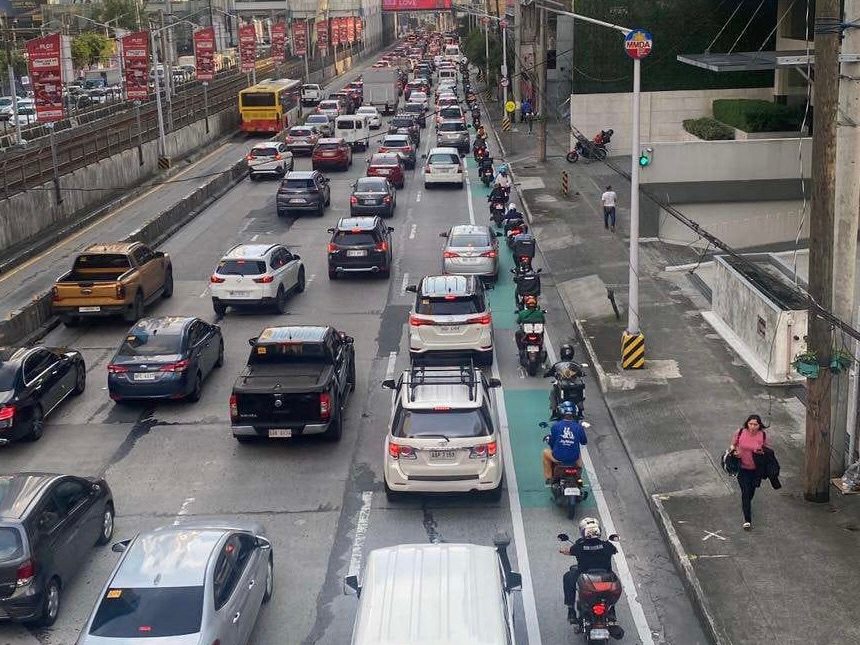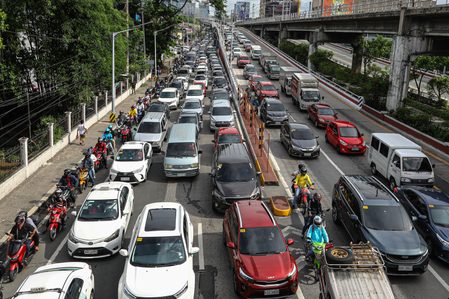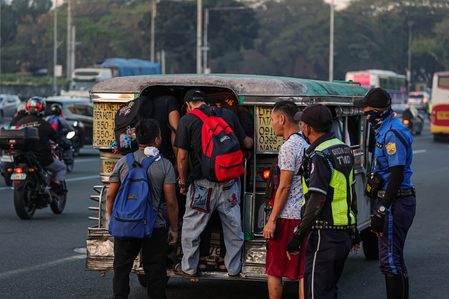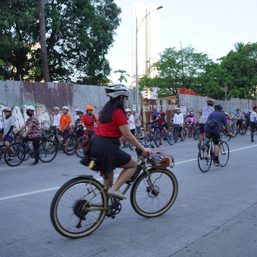SUMMARY
This is AI generated summarization, which may have errors. For context, always refer to the full article.

MANILA, Philippines – In a country that has four times more bike owners than car owners, the Department of Transportation (DOTr) must now work within an even tighter budget to realize its dream of more bicycle and pedestrian infrastructure.
For next year, the DOTr will only have P500 million for its active transport bike share system and safe pathways program, which is less than the program’s budget in 2022 and 2023.
Right now, the DOTr is still using its 2022 budget of P2 billion to build bike and pedestrian infrastructure, like its P64.16-million project in Intramuros.
Meanwhile, the P705 million budget in 2023 for the active transport project remains unused so far, but there are plans to use it before the year ends for the expansion of bike lanes, maintenance and upgrading of existing bike lane networks, establishment of end-of-trip cycling facilities, and construction of public transport stops.
DOTr officials said that they have already submitted to the Department of Budget and Management (DBM) a detailed list of where the bike lanes will be located – the first step in securing the funds before passing them down to the local government units to then actually build the infrastructure.
“We commit to complete all the projects using the 2023 funds,” Transportation Undersecretary Anneli Lontoc said in a House meeting on Monday, September 4. “We have already submitted to DBM where these [bike lanes] will be located.”
However, Kabataan Party Representative Raoul Manuel, among others, questioned the sufficiency of a P500 million budget for an active transport system that’s still far from being fully developed. (READ: Can Metro Manila’s cycling boom survive a return to car traffic?)
“One in every three Filipino households ngayon ay gumagamit o merong biskleta. Tapos lahat ng Pilipino naman ay naglalakad, lahat pedestrian. Pero hindi aligned ‘yung budget proposal sa facts and realities na meron tayo (now use or have a bicycle. And all of us Filipinos walk. We’re all pedestrians. But our budget proposal isn’t aligned with the facts and realities that we have),” Manuel said.
Ironically, the P500 million budget is actually already a step up since the DBM intended to remove the funding of the active transport program altogether. That was after the DOTr requested for P1.996 billion to continue expanding bike lanes nationwide.
“The original proposal for tier 2 of active transport for 2024 is actually a little less than 2 billion – P1.996 billion,” Transportation Undersecretary Kim De Leon said on Monday. “However, in the initial confirmation that we received for the NEP [National Expenditure Program] from the DBM, zero po ang na-consider dito (is what they considered giving) partly because of the utilization of the 2023 [allocation].”
The DOTr had to send a letter of reconsideration to appeal for the program to at least receive a P500 million allotment.
‘Pedestrian network’ in EDSA
In its push for pedestrianization, the DOTr will also begin construction next year the EDSA Greenways Project, the elevated pedestrian walkway which has already been delayed thrice and is now set for completion in 2027.
“The development of active transport infrastructure, both for walking as well as for bicycles, is not a pandemic-only initiative of the DOTr. In fact, if you would notice, the EDSA Greenways project is our first mega project level investment when it comes to pedestrianization and when it comes to bicycle infrastructure,” said Transportation Undersecretary TJ Batan.
The 5-kilometer walkway will traverse a portion of the 23.8-kilometer long highway, and will connect “pedestrian networks to key train stations along EDSA – namely Balintawak, Cubao, Guadalupe, and Taft,” according to Transportation Secretary Jaime Bautista.
The foreign-assisted project has P262,906,000 allotted in next year’s budget, supplemented by a P6-billion loan in December 2020 from the Asian Development Bank.
“We’re only starting with the P700 million this year, the P500 million next year, the budget for the EDSA Greenways. But we intend to ramp up all of this investment towards pedestrianization and bicycle-friendly infrastructure,” Batan said on Monday.
Will this be enough?
The relatively small budget allocation for bicycle and pedestrian projects has garnered criticism from some groups. The Move As One Coalition – made up of 140 civil society organizations – said that the “slashing of the budget for active transport will expose pedestrians and cyclists to the risk of injury or death due to a road crash.”
“When commuters come down from the train station, we walk, bike, or ride a jeep and tricycle. Yet we see no meaningful budget to make these modes more safe and reliable for the 94% of Filipinos who do not own private vehicles,” Robert Siy Jr., transport economist and co-convenor of the coalition, said in a statement on August 7.
Since May 2020, thirteen national surveys have consistently shown that there are more bicycle owners than car owners nationwide. The latest survey by the Social Weather Stations showed that over a third of households have at least one person who cycles.
“The Philippine Development Plan 2023-2028 declares that ‘pedestrians and cyclists will be accorded highest priority in the hierarchy of road users.’ However, the NEP 2024 does not reflect this significant transportation policy statement,” Siy added.
Even with established protected bike lanes, cyclists must battle to keep them from being converted into “sharrows” or lanes shared between bikes and motor vehicles. Earlier this year, fierce opposition from cyclists and advocates stopped an initiative to re-designate Makati City’s Ayala Avenue dedicated bike lane as a shared lane. That means the protected bike lanes at the heart of the central business district stays – at least for now.
This hasn’t stopped other attempts to remove bike lanes. The Metropolitan Manila Development Authority (MMDA) may soon turn EDSA’s bicycle lanes – one of the nation’s most congested routes – into a shared lane for bicycles and motorcycles, citing the current setup as “underutilized.”
In a related development, based on MMDA’s advice, San Juan City has already taken down bollards from bike lanes in certain sections of Ortigas Avenue. These bollards, which shield cyclists from motor vehicle traffic, were originally installed during the peak of the COVID-19 crisis.
– Rappler.com
Add a comment
How does this make you feel?











There are no comments yet. Add your comment to start the conversation.